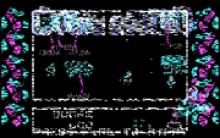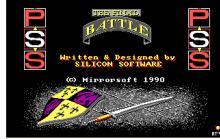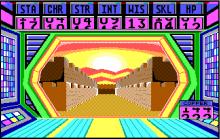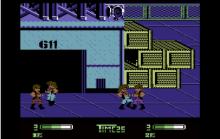The Worm
How to play The Worm
- Use the arrow keys to control the direction of the worm.
- Navigate the worm through the maze to eat the food.
- Avoid running into the walls or the worm's own body.
- The game ends if the worm crashes into an obstacle.
The Worm Description
"The Worm" is a classic arcade game from 1985, developed and published by Deyan Rudev for the DOS operating system. In "The Worm," players control a growing worm navigating through a maze-like environment. The game is a delightful blend of action and strategy, where quick reflexes and sharp planning are essential for success.
The objective of "The Worm" is simple yet challenging: guide the worm to consume food scattered throughout the maze while avoiding walls and the worm's own ever-growing body. Each piece of food makes the worm longer, increasing the difficulty as the game progresses. The game's top-down perspective provides a clear view of the maze, allowing players to plan their moves carefully.
"The Worm" stands out with its straightforward gameplay and increasing difficulty, which keeps players engaged and on their toes. The game's minimalist graphics and smooth controls make it an enjoyable experience, capturing the essence of early arcade action games. As the worm grows, maneuvering through tight spaces becomes more challenging, providing a satisfying and addictive gameplay loop.
Cheats/Hints/Walkthroughs for The Worm

The Worm (1985 DOS Game by Deyan Rudev)
In the world of classic video games, "The Worm," developed by Deyan Rudev in 1985, stands out as a beloved DOS game that captivated players with its simple yet addictive gameplay. This article explores the nuances of "The Worm," delving into its gameplay mechanics, historical context, and its enduring legacy in the gaming community.
Gameplay of The Worm
"The Worm" is a classic example of a snake game, a genre that gained significant popularity in the 1980s. Players control a worm that moves around the screen, consuming objects to grow longer. The primary objective is to navigate the worm without running into walls or its own tail, which becomes increasingly challenging as the worm grows.
The game features:
- Simple Controls: Players use arrow keys to direct the worm's movement.
- Increasing Difficulty: As the worm consumes more objects, it becomes longer and faster, making it harder to avoid collisions.
- Score Tracking: The game keeps track of the player's score based on the number of objects consumed, encouraging competitive play and replayability.
Historical Context and Development
Released in 1985, "The Worm" came out during a period when personal computers were becoming more accessible to the public. Deyan Rudev, the developer, contributed to the growing library of DOS games with this title. The simplicity and accessibility of "The Worm" made it an instant hit among gamers looking for a quick and entertaining challenge.
During the mid-1980s, the gaming industry was experiencing rapid growth, with developers experimenting with various genres and gameplay mechanics. "The Worm" capitalized on the popularity of arcade-style games, offering a straightforward yet compelling experience that appealed to a broad audience.
Cultural Impact and Legacy
"The Worm" has left a lasting impression on the gaming community. Its straightforward gameplay has inspired countless variations and adaptations over the years, including the highly popular "Snake" game found on early mobile phones. The enduring appeal of "The Worm" lies in its ability to offer a fun and challenging experience that is easy to learn but difficult to master.
Many gamers who grew up in the 1980s fondly remember "The Worm" as one of their first gaming experiences on a personal computer. Its legacy is evident in the continued popularity of snake games across various platforms, from classic arcade cabinets to modern smartphones.
Similar Games
For fans of "The Worm," several other classic and modern games offer similar gameplay experiences:
- Snake (Nokia): Perhaps the most famous adaptation, this version of the snake game became a staple on Nokia mobile phones in the late 1990s and early 2000s.
- Nibbles (QBasic): Another DOS-based snake game, "Nibbles" was included with MS-DOS 5.0 and later versions, featuring more complex levels and multiplayer options.
- Slither.io: A modern take on the classic snake game, "Slither.io" is an online multiplayer game where players control a snake and compete to become the largest on the server.
- Snake Pass: This contemporary game offers a 3D twist on the classic snake gameplay, with players navigating a colorful world and solving puzzles.
"The Worm," developed by Deyan Rudev in 1985, remains a significant piece of gaming history. Its simple yet addictive gameplay has not only entertained countless players over the years but has also inspired numerous adaptations and evolutions of the snake game genre. Whether you are a nostalgic gamer looking to relive the past or a new player discovering classic games, "The Worm" offers a timeless experience that continues to delight and challenge.

















Write a comment